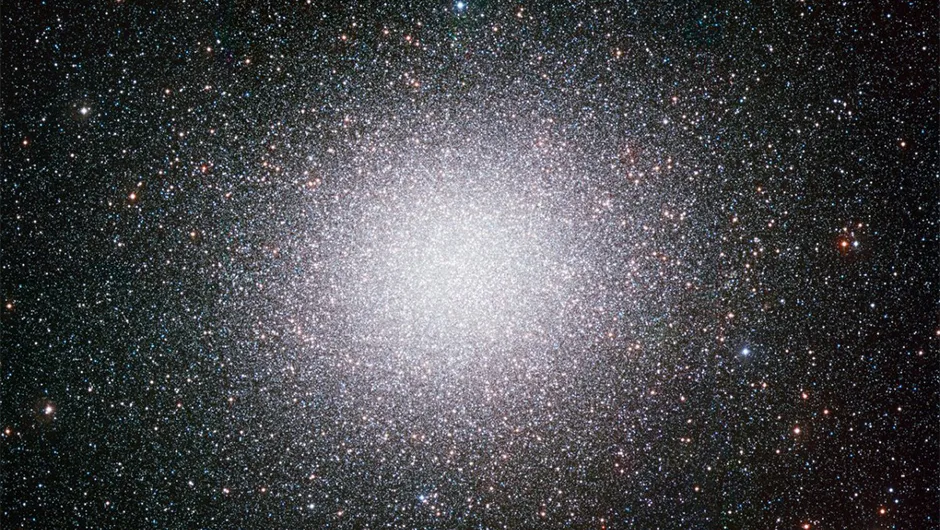The bright, huge globular star cluster Omega Centauri may have a black hole within it, according to a study made using the Hubble Space Telescope.
Astronomers looked at over 500 Hubble images of the globular cluster and detected seven stars that are moving incredibly fast within the innermost region.
These, say, the team, provide evidence of an intermediate-mass black hole in Omega Centauri.
Intermediate-mass black holes are a ‘missing link’ in black hole evolution, and only a few other candidates have been found in the Universe so far.
They are so-called because most known black holes are monumentally massive like the supermassive black holes that lurk at the centres of most galaxies, or small with a mass less than 100 times that of the Sun.
Studying intermediate-mass black holes will help astronomers learn more about how black holes form and evolve, and whether supermassive black holes grow from intermediate mass ones.

Omega Centauri
The globular cluster Omega Centauri is a southern hemisphere night-sky target and can be seen with the naked eye under dark skies.
It's located 17,700 lightyears away and has been observed for hundreds of years.
Globular clusters are thought to be among the oldest objects in the Universe, and consist of up to 1 million stars all tightly held together by gravity.
Omega Centauri is something of an anomaly, as it rotates faster than most globular clusters and is about 10 million times bigger, making it almost as massive as a small galaxy.
That means Omega Centauri has about 10 million stars within its gravitational grasp.

Finding a black hole in Omega Centauri
A team of astronomers created a catalogue of the motion of stars within Omega Centauri, measuring the velocities of 1.4 million stars.
They did this by analysing over 500 Hubble Space Telescope images of the cluster.
"We discovered seven stars that should not be there," says Maximilian Häberle of the Max Planck Institute for Astronomy in Germany, who led the study.
"They are moving so fast that they should escape the cluster and never come back. The most likely explanation is that a very massive object is gravitationally pulling on these stars and keeping them close to the centre.
"The only object that can be so massive is a black hole, with a mass at least 8,200 times that of our Sun."

Previous studies have suggested there could be an intermediate-mass black hole in Omega Centauri, but other studies suggest it might instead be a cluster of stellar-mass black holes.
"This discovery is the most direct evidence so far of an IMBH in Omega Centauri," says team lead Nadine Neumayer of the Max Planck Institute for Astronomy, who initiated the study with Anil Seth of the University of Utah in the United States.
"This is exciting because there are only very few other black holes known with a similar mass. The black hole in Omega Centauri may be the best example of an intermediate-mass black hole in our cosmic neighbourhood."
The black hole is thought to be 8,200 times as massive as our Sun, but this is yet to be confirmed.
Follow-up observations of the stars by the team using the James Webb Space Telescope are planned, and could help solve the mystery once and for all.
Read the full paper at arxiv.org/abs/2404.03722
